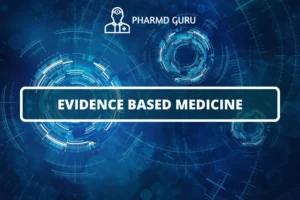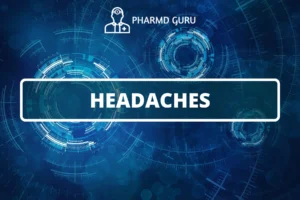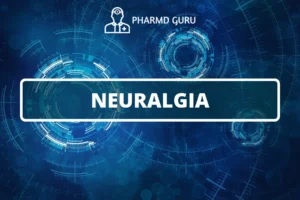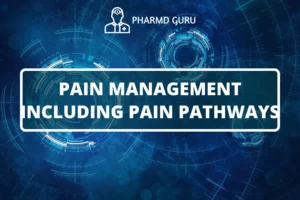Obsessive Compulsive Disorder (OCD) is a chronic mental health condition characterized by intrusive thoughts (obsessions) and repetitive behaviors or mental acts (compulsions). These obsessions and compulsions can significantly impact an individual’s daily life and overall well-being. In this article, we will explore the etiopathogenesis, or underlying causes and mechanisms, of OCD and discuss the pharmacotherapy options used in its treatment.
SCROLL DOWN TO THE BOTTOM OF THIS PAGE FOR ACTUAL NOTES.
Table of Contents
- Introduction
- Understanding Obsessive-Compulsive Disorder
- Etiopathogenesis of Obsessive-Compulsive Disorder
- Neurochemical Imbalances
- Genetic and Environmental Factors
- Clinical Features and Diagnosis
- Treatment Options
- Pharmacotherapy for Obsessive-Compulsive Disorder
- Cognitive-Behavioral Therapy (CBT)
1. Introduction
Obsessive-Compulsive Disorder (OCD) is a chronic and often debilitating mental health condition that affects people of all ages. It is characterized by recurrent, intrusive thoughts (obsessions) and repetitive behaviors or mental acts (compulsions). Understanding the etiopathogenesis of OCD is crucial for accurate diagnosis, effective treatment, and improved quality of life.
2. Understanding Obsessive-Compulsive Disorder
Obsessive-Compulsive Disorder involves the presence of obsessions and compulsions:
- Obsessions: Obsessions are intrusive and unwanted thoughts, urges, or images that cause significant distress. Common obsessions include fears of contamination, a need for symmetry, forbidden or taboo thoughts, and excessive doubt.
- Compulsions: Compulsions are repetitive behaviors or mental acts that individuals feel driven to perform in response to their obsessions. These compulsions are aimed at reducing distress or preventing a feared outcome. Common compulsions include excessive handwashing, checking, counting, arranging, and mental rituals.
3. Etiopathogenesis of Obsessive-Compulsive Disorder
The exact etiopathogenesis of OCD is not fully understood. However, it is believed to involve a combination of factors, including neurochemical imbalances, genetic predisposition, and environmental influences.
4. Neurochemical Imbalances
Neurotransmitters, such as serotonin, dopamine, and glutamate, play a role in the etiology of OCD. Imbalances in these neurotransmitters, particularly serotonin, have been implicated in the development and maintenance of OCD symptoms. Medications that target these neurotransmitter systems are often used in the pharmacotherapy of OCD.
5. Genetic and Environmental Factors
OCD tends to run in families, suggesting a genetic predisposition to the disorder. Several genes have been identified as potential contributors to OCD development. Environmental factors, such as traumatic events, childhood adversity, and chronic stress, may also play a role in triggering or exacerbating OCD symptoms in individuals who are genetically susceptible.
6. Clinical Features and Diagnosis
Diagnosing OCD involves a comprehensive assessment of symptoms, medical history, and ruling out other potential causes. The Diagnostic and Statistical Manual of Mental Disorders (DSM-5) provides criteria for the diagnosis of OCD, which includes the presence of obsessions and/or compulsions that cause distress or significantly interfere with daily functioning.
7. Treatment Options
The treatment of OCD typically involves a combination of pharmacotherapy and psychotherapy. The choice of treatment depends on the severity of symptoms, individual preferences, and the presence of any comorbid conditions. Let’s focus on the pharmacotherapy options:
8. Pharmacotherapy for Obsessive Compulsive Disorder
Pharmacotherapy plays a significant role in the management of OCD. Medications used in the treatment of OCD include:
- Selective Serotonin Reuptake Inhibitors (SSRIs): SSRIs, such as fluoxetine, fluvoxamine, sertraline, and escitalopram, are the first-line pharmacological treatment for OCD. They work by increasing serotonin levels in the brain, which helps regulate mood and reduce obsessive thoughts and compulsive behaviors.
- Tricyclic Antidepressants (TCAs): TCAs, such as clomipramine, are another class of antidepressants that can be effective in treating OCD when SSRIs are not sufficient. However, TCAs may have more side effects and require careful monitoring.
- Augmentation Strategies: In some cases, when SSRIs or TCAs alone are not fully effective, other medications, such as antipsychotics (e.g., risperidone, quetiapine) or glutamate-modulating agents (e.g., memantine), may be added to augment the treatment.
It is important to note that medication should be prescribed and monitored by a qualified healthcare professional, as each medication has its own benefits, side effects, and considerations.
9. Cognitive Behavioral Therapy (CBT)
In addition to pharmacotherapy, Cognitive-Behavioral Therapy (CBT) is a highly effective psychotherapeutic approach for OCD. CBT for OCD typically involves exposure and response prevention (ERP), where individuals are gradually exposed to their obsessions and learn to resist the accompanying compulsions. CBT helps individuals challenge and restructure their thought patterns, develop healthy coping strategies, and reduce the impact of OCD on their daily lives.
ACTUAL NOTES:




